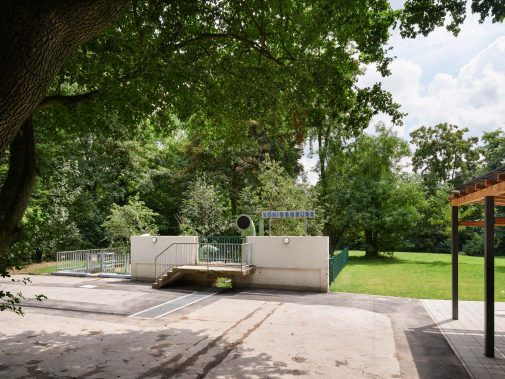
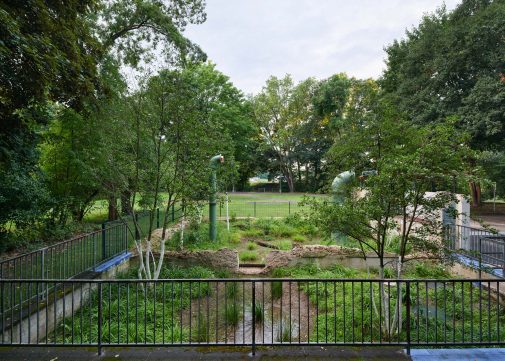
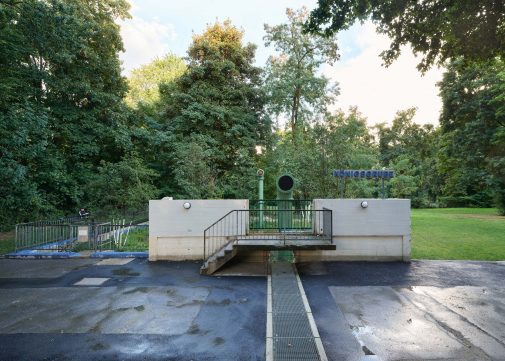
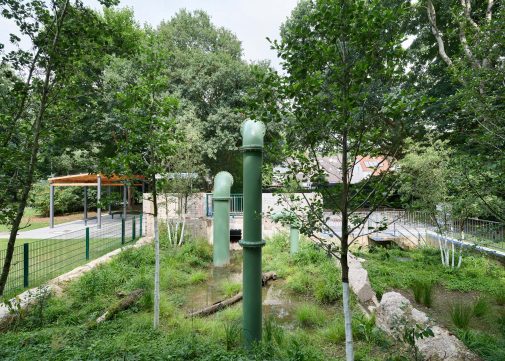
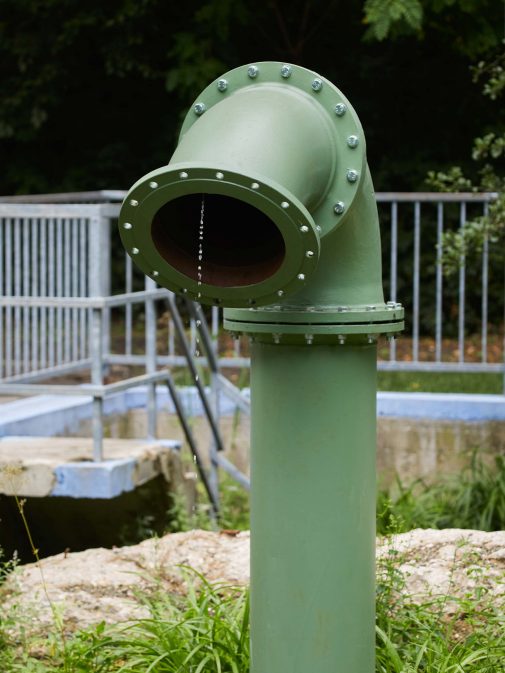
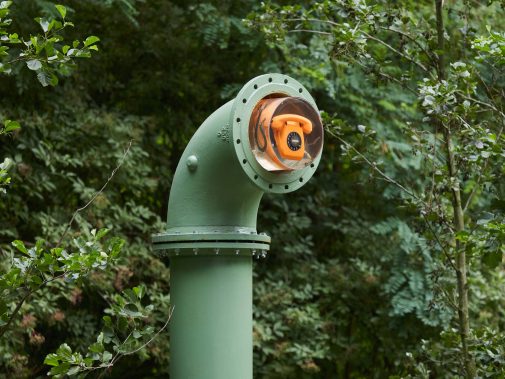
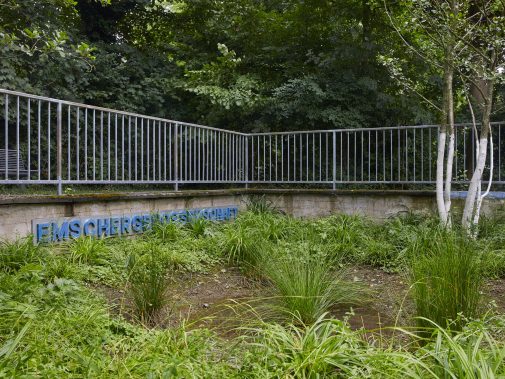
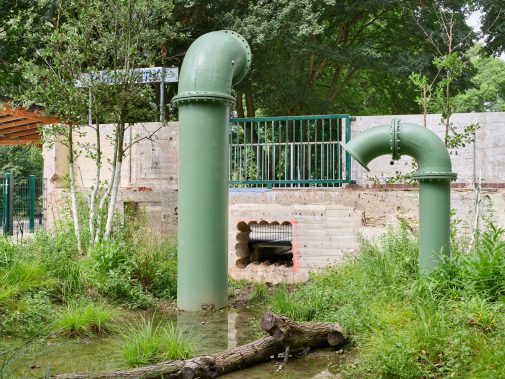
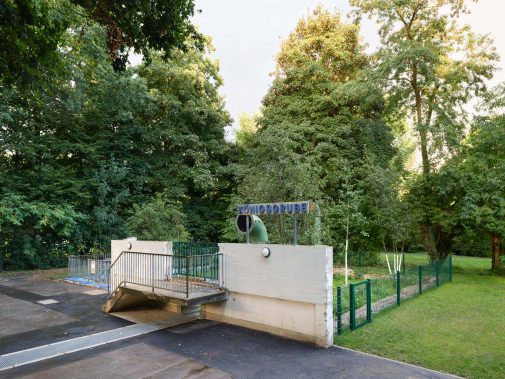
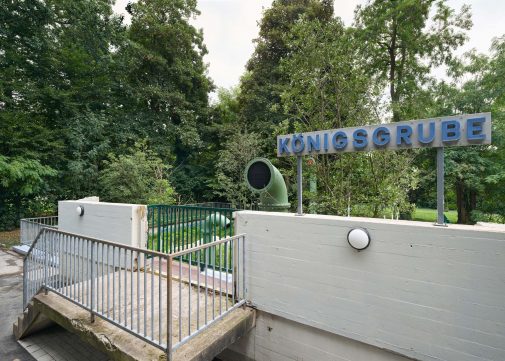
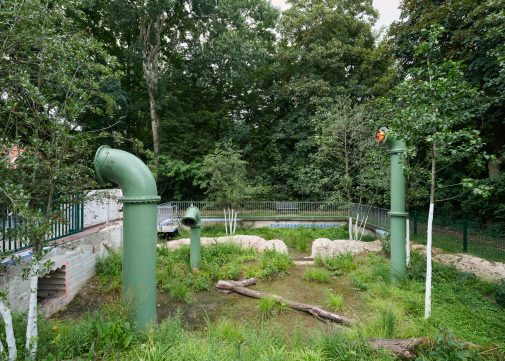
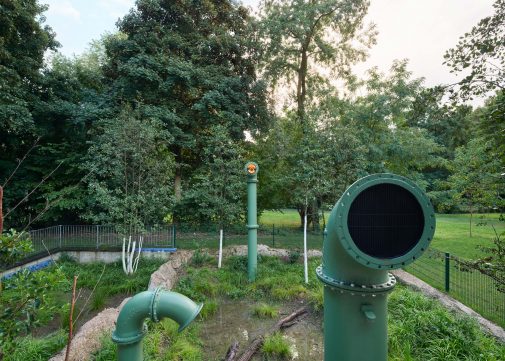
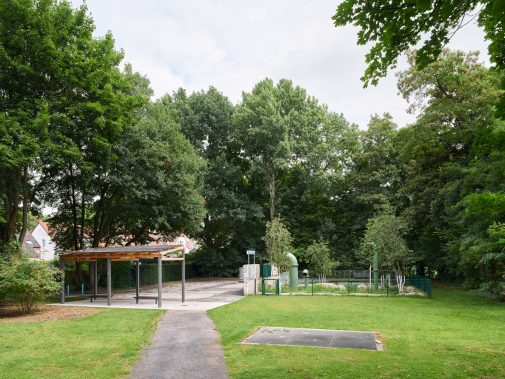
Königsgrube (2025)
A former pumping station of a disused mine becomes an installation, the name remains and sounds promising: Königsgrube. Past and future determine Markus Jeschaunig’s work, in which he transforms fragments of the demolished building into a hybrid landscape.
From 1860 to 1967, the coal mining of the Königsgrube mine in Herne-Röhlinghausen was extremely profitable, then the black gold was mined, the earth was left leached and riddled with depressions up to 10 meters deep. The pumping station was tasked with directing the wastewater from the surrounding communities into the Hüllerbach and from there into the Emscher. When coal mining ended, underground disposal became possible and the pumping station was shut down.
On the partially filled foundation, the artist Markus Jeschaunig has created an installation that sculpturally integrates various elements of the building: part of a staircase remains, three pipes rise high and form a solar-powered fountain; drops of water and sounds emerge from it. Where the more than 12-meter-deep sewage basin used to be and rainwater does not seep away naturally, a swamp forest is being created, a biotope of 6 black alders that like it moist and are reminiscent of the floodplain landscapes along the Emscher in pre-industrial times. On the paved forecourt, local rainwater is collected via gutters in a cistern and, together with the photovoltaic pergola, enables completely self-sufficient operation.
As an artistically redesigned ruin, Jeschaunigs work points to both the great technologies and the enormous ecological destruction that mining brought with it, while at the same time showing a way in which new life and climate-positive places can emerge in the city.
Concrete structure (fragment of the former pumping station)
Steel pipe sculptures, fence elements, iron grilles, concrete stairs (made from original parts)
Water channels, water cistern, storage gravel, water pump, PV pergola, control cabinet
Farmland vegetation (sedge, fern, mint, black alder, etc.)
Sound installation, fountain installation, synthetic resin casting
Dimensions of the marshland 13.1 x 11.70 m
Dimensions of the total area 24.90 x 21.60 m
Depth of the backfilled former pumping room 12.50 m
Framework: Emscher Art Trail – Ruhrgebiet/Germany
Commissioned by: Urban Künste Ruhr / Director Britta Peters
Cooperation partners: EGLV Emschergenossenschaft and Lippeverband, RVR Regionalverband Ruhr
Foto: Henning, (Featured Image: D. Sadrowski)
Video production: Gionik Media GmbH

